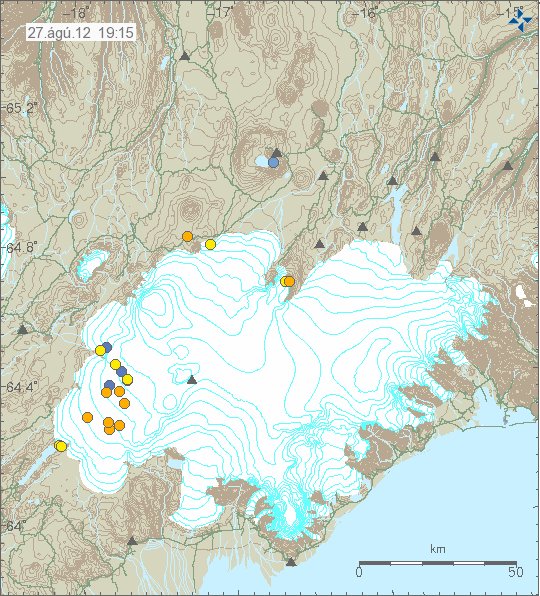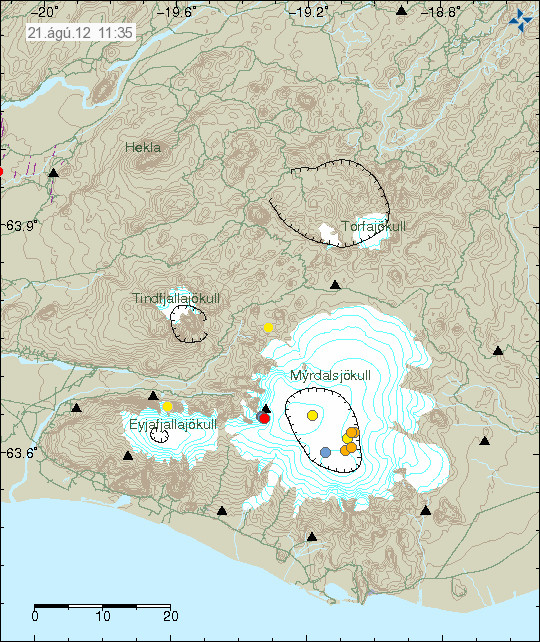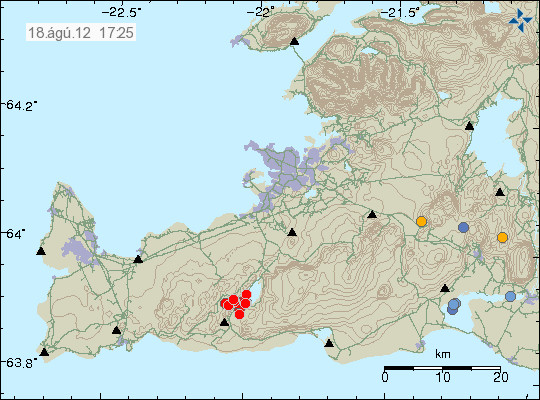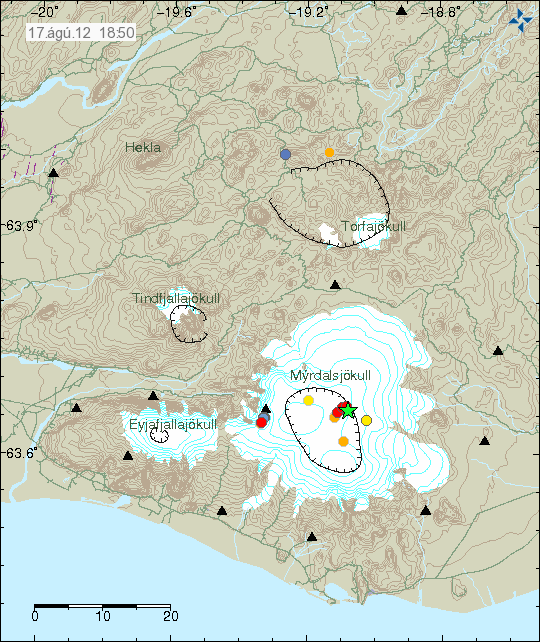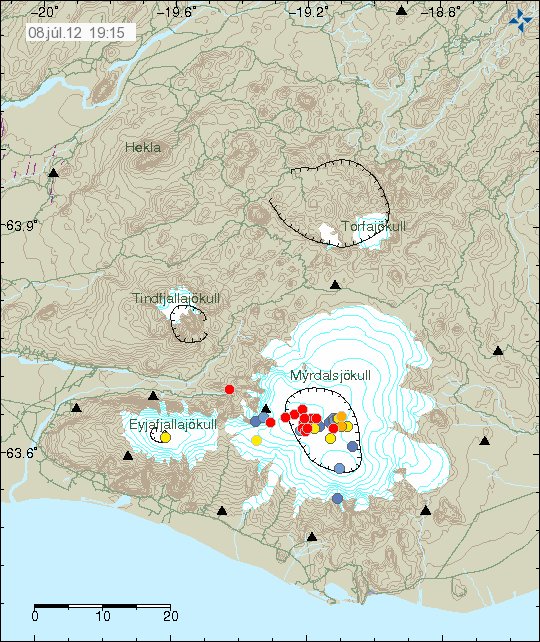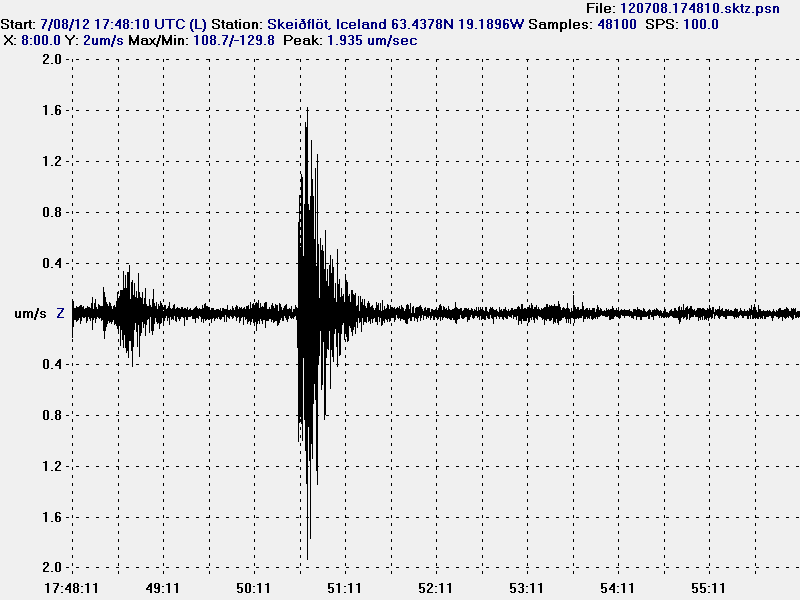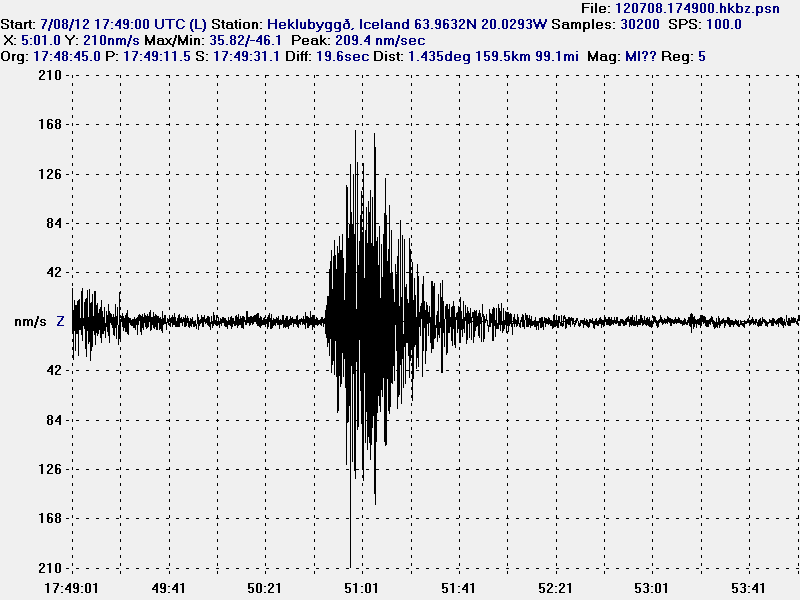Today (30.08.2012) at 11:59 UTC there was an earthquake with the magnitude of ML3.8 (4.2Mw) in Brennisteinsfjöll volcano / SISZ. But SISZ overlaps this area to some extend. So large earthquakes do happen in this area of Iceland on regular basis. This earthquake was felt in Reykjavík area, south Iceland and some part of western Iceland.
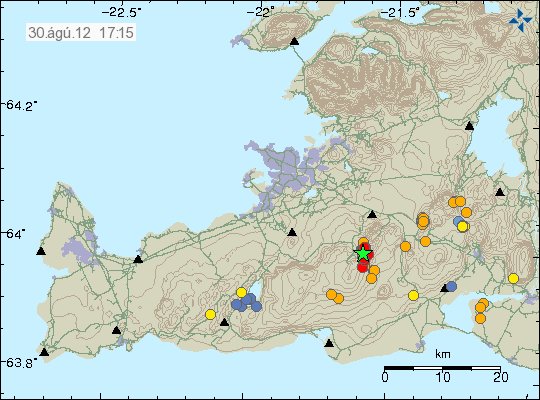
The earthquake location and the following aftershocks. Copyright of this image belongs to Icelandic Meteorological Office.
In around 30 aftershocks have been detected in the area. More aftershock activity in this area cannot be ruled out. This earthquake did appear clearly on my geophones all over Iceland.
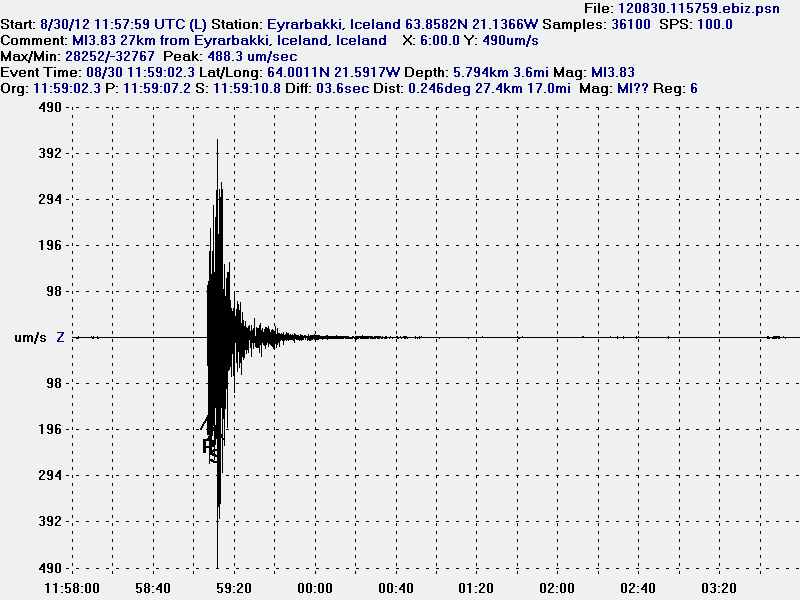
The earthquake at Eyrarbakki geophone station. This geophone is the closest to the earthquake. The most movement in this earthquake was on an N-S and E-W fault according to my geophones. This picture is released under CC Licence. See licence page for more details.
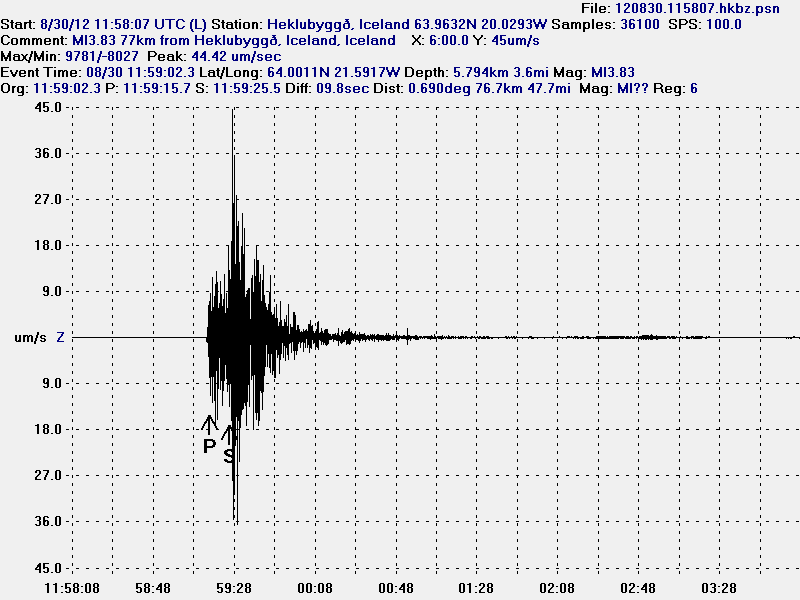
This is the earthquake as it was recorded on Heklubyggð geophone. It is the second closest geophone station to this earthquake. This picture is released under CC Licence. See licence page for more details.
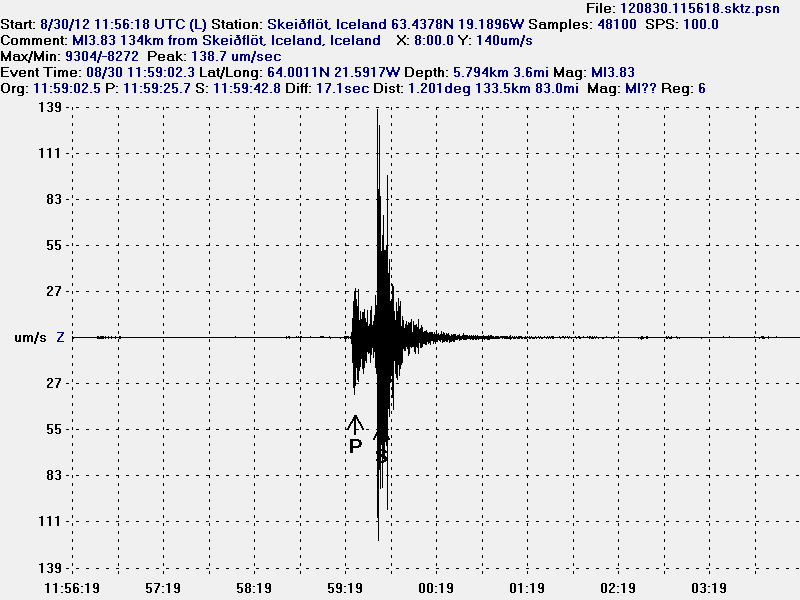
Here is the earthquake as it did appear on Skeiðflöt geophone. This picture is released under CC Licence. See licence page for more details.

Here is the earthquake as it did appear on Hvammstangi geophone. This picture is released under CC Licence. See licence page for more details.
It is impossible to know for sure what this earthquake activity means. But earthquake activity in this area of Brennisteinsfjöll volcano did stop around 15:49 UTC. No aftershocks did go above 2.0 in magnitude. More earthquakes in this area should not be ruled out in the next few days to weeks.
Icelandic News about this earthquake
Alltaf von á eftirskjálftum (Rúv.is)
Skjálftinn á enda stórs misgengis (Rúv.is)
Verra ef safnið hefði skemmst (Rúv.is)
Skjálftinn hápunktur – ekki fyrirboði (Rúv.is)
Jörð skalf í dag (Rúv.is. Afternoon radio show about this earthquake in Icelandic)
Jarðskjálftasvæðið undir smásjá sérfræðinga (Vísir.is)
Má búast við nokkrum eftirskjálftum (Vísir.is)
Fólk hljóp á dyr í Litlu Kaffistofunni (Vísir.is)
Jarðskjálftinn var 4,6 stig (Vísir.is)
Á þriðja tug eftirskjálfta hefur mælst (mbl.is)
Jarðskjálfti upp á 4,6 stig (mbl.is)
Snarpur jarðskjálfti á höfuðborgarsvæðinu – Stærsti skjálftinn í 3 ár (Pressan.is)
Jarðskjálftafræðingur: Ekki búið að losa um neina spennu að ráði (Pressan.is)

